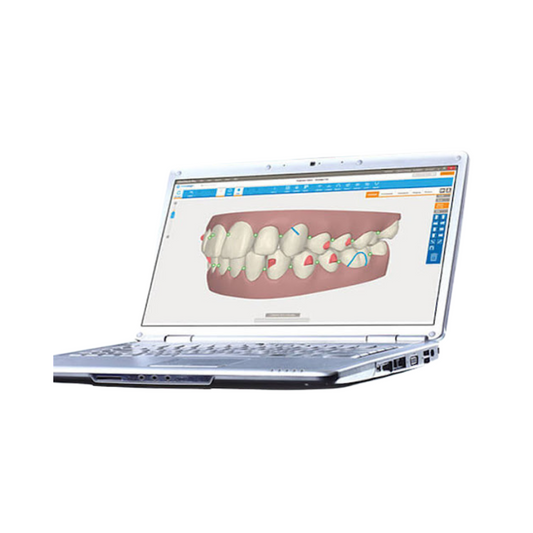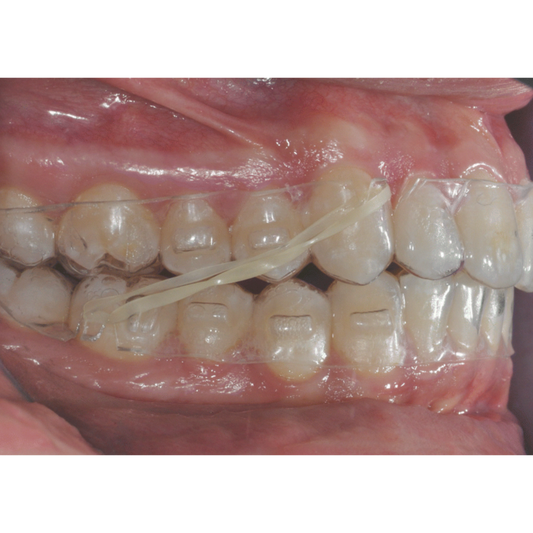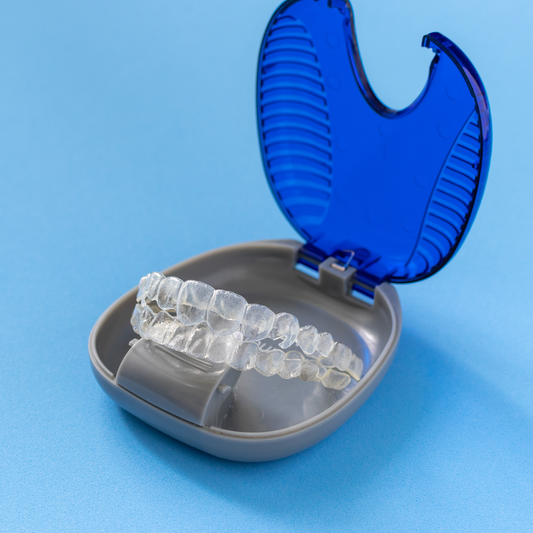
🥷 Mastering IPR with Clear Aligners: A Ninja-Level Guide
🥷Mastering IPR with Clear Aligners: A Ninja-Level Guide
Interproximal Reduction (IPR) is one of the most powerful tools in the clear aligner arsenal. When used strategically, it allows clinicians to unlock space, improve alignment, and avoid unnecessary extractions—all without compromising esthetics or function.
At Aligner Ninjas, we view IPR as a precision strike: subtle, calculated, and incredibly effective when executed correctly. This post will cover the what, why, when, and how of using IPR in your clear aligner treatments.
🥷 What Is IPR?
Interproximal Reduction, often referred to as "slenderizing" or "enamel stripping," is the process of removing small amounts of enamel between teeth to create space. The goal is to relieve crowding, reduce black triangles, or fine-tune occlusion. In clear aligner therapy, IPR is often programmed into the treatment plan and performed manually by the clinician.
Most IPR procedures remove between 0.1mm to 0.5mm of enamel per contact. This small amount can make a big difference when space is at a premium.
🧠 Why Use IPR?
IPR is a minimally invasive solution to several common orthodontic challenges:
- Resolve Mild to Moderate Crowding: Create space without extractions, especially in cases with 2-6 mm of crowding.
- Prevent Incisor Proclination: Avoid pushing teeth too far labially when resolving crowding with aligners alone.
- Correct Tooth Size Discrepancies: Harmonize the Bolton ratio when teeth are disproportionate in size.
- Improve Aesthetics: Close dark gingival embrasures (black triangles) and create smoother contact points.
- Enhance Stability: Better interdigitation can lead to more stable occlusion post-treatment.
When done properly, IPR helps achieve more predictable, efficient, and stable outcomes.
⏱ When Should I Use IPR?
Like any ninja move, timing is critical. IPR can be used at various stages in the treatment plan:
- Proactively: Before crowding worsens or early in treatment to ensure proper tracking.
- Reactively: In refinement stages, if teeth are not aligning as planned or if black triangles appear.
- Predictively: Based on arch length analysis or digital setups, where minor space creation is needed.
While many setups include IPR early, it’s important to evaluate if space is truly necessary. Our ClinCheck Ninjas often adjust or delay IPR for better precision and comfort.
🛠 How Is IPR Performed?
There are several ways to perform IPR, depending on your preference and the amount of enamel to be removed:
- Abrasive Strips: Great for small adjustments and tight contacts. They offer tactile control but can be time-consuming.
- Disc Systems: Fast and effective for larger amounts of enamel reduction. Must be used with caution to avoid damaging soft tissue.
- Oscillating Systems (e.g. G5, ARS): Provide controlled, motorized enamel reduction and minimize patient discomfort.
Regardless of the method, it’s essential to monitor the enamel thickness and use proper isolation, suction, and polishing techniques afterward. IPR should always be performed with precision and care—never as a routine or unnecessary step.
🔍 Clinical Tips from Our Ninja Squad
- Check the Contacts First: Use floss or shim gauges to confirm whether the contact is open or tight before initiating IPR.
- Don’t Blindly Follow the Software: Not all programmed IPR is necessary. Always cross-check with clinical conditions.
- Split IPR into Phases: Rather than performing all at once, divide IPR across multiple appointments to ensure control.
- Document Everything: Record the amount, location, and method used for each IPR session. It’s good practice and protects you medico-legally.
- Polish and Fluoride: After IPR, polish the surfaces and apply fluoride varnish to minimize sensitivity or demineralization.
📉 Risks of Overdoing It
Too much IPR can compromise enamel integrity, lead to sensitivity, or affect long-term health. Remember: enamel doesn’t grow back. A light, conservative approach is always recommended.
Our ninja motto: “Only reduce what is necessary. No more, no less.”
💡 When NOT to Use IPR
While IPR is a powerful tool, it’s not always the right solution. Avoid or minimize IPR in the following cases:
- Young patients with large pulp chambers and developing enamel.
- Teeth with existing interproximal restorations (e.g., fillings or crowns).
- Patients with poor oral hygiene or high caries risk.
- Teeth with significant wear or erosion where further enamel loss is contraindicated.
As with all aligner planning, clinical judgment is key. When in doubt, consult with your planning Ninja.
⚔️ Final Thoughts
IPR is a subtle yet powerful move in the clear aligner playbook. When used with precision, it can transform outcomes—improving space management, esthetics, and long-term retention. But it’s not a one-size-fits-all solution. The secret lies in timing, technique, and tailoring it to each individual case.
At Aligner Ninjas, we specialize in optimizing clear aligner plans with stealth, strategy, and surgical precision. Whether you’re unsure how much IPR to use or where it fits in your treatment, our team is ready to assist.
Relax and let our ClinCheck Ninjas plan the perfect strike—so you can stay focused on delivering exceptional smiles.
---
Need help with your aligner setups? Let our Ninjas sharpen your plans. Contact us or submit your case today!




